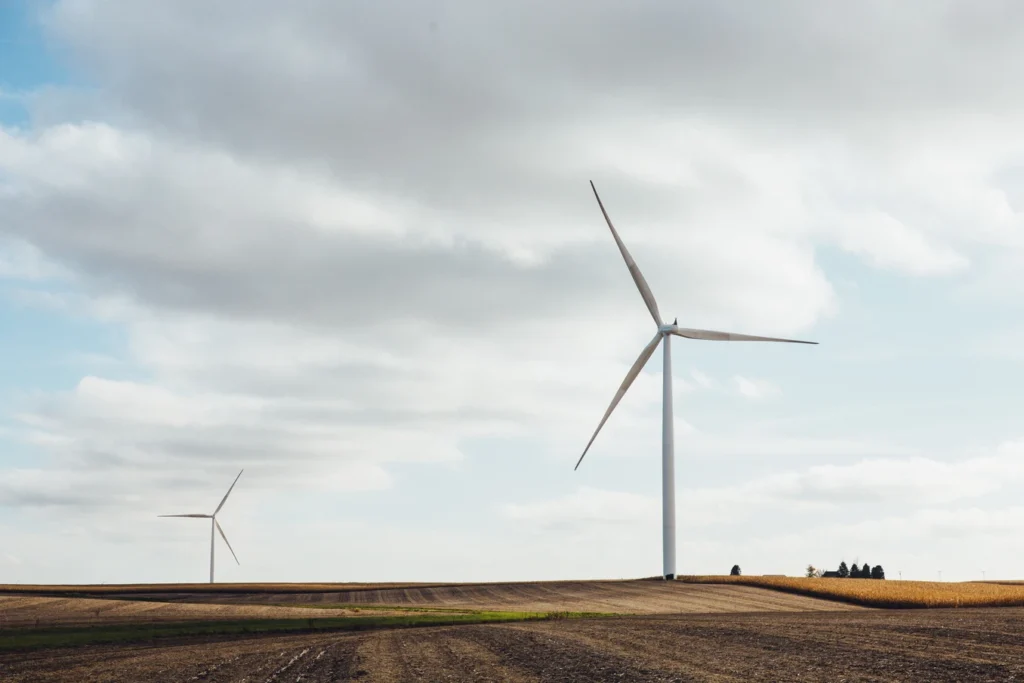While there are many trends impacting the renewable energy industry, this month’s blog post highlights what we feel are the top four trends in Canada to watch in 2021 and beyond. The trends discussed in this post are our own opinions, and are based on past observations and educated estimates for what may happen in Canada for 2021 and beyond.
Top Trends to Watch for in Canada’s Renewable Energy Sector
Trend 1: Growth in corporate renewable energy procurement in Alberta
This is the most obvious trend and one that has been gaining steam over the past few years. Those who aren’t following the renewable energy industry may have even heard about corporations agreeing to purchase bulk renewable energy in Alberta. Direct Energy has been a notable leader in this trend so far having made new announcements in both 2019 and 2020 to purchase solar energy. Other companies who have made the decision to purchase solar energy are TC Energy, Alberta Infrastructure, and Telus: to name just a few. We expect this trend to not only continue, but to increase and further drive the Province’s dominance in utility scale in solar and wind energy development in Canada.
Trend 2: Utilities across Canada making improvements to and creating new programs for greater adoption of customer renewable energy generation
Utilities are notorious for implementing programs, changing programs, and cancelling programs with little warning (often at no fault of their own). With renewable energy being critical in helping utilities reduce the carbon intensity of their grids, we think a new trend will be utilities taking a new leadership role here. As a recent example, the Province of Nova Scotia created a program called the Green Choice Program which will create an opportunity for large institutional/corporate customers to purchase renewable energy. This new program could be a great sign that this trend may continue in other Provinces and Territories going forward.
Trend 3: Increase in number of Indigenous-led renewable energy development across Canada
Look for Indigenous led energy projects across Canada to continue to develop and help the Country achieve meaningful greenhouse gas emission reductions in the electricity sector. A recent article in Industry West Magazine highlighted Saskatchewan’s First Nations Power Authority (FNPA) and the role they play in bringing more investment to First Nation communities. We have mentioned this before and we will certainly mention this again but we expect Saskatchewan to be right at the forefront in Canada thanks in large part to the First Nations Power Authority (FNPA) and the leadership being shown by First Nations and Indigenous groups in the Province.
Trend 4: Growth in renewable energy related trades programs at post-secondary schools
The fourth trend we expect to see in 2021 and beyond is the increase in post-secondary schools’ interest in creating new programs related to renewable energy. Wind turbine technicians’ roles come to mind as a quickly growing job. It is reasonable to assume that more schools across Canada will begin to offer programs that will help bring skilled workers to the industry this decade.
Final Thoughts
Canada’s electricity sector experienced challenges and changes in consumer patterns in 2020. From shifting demand profiles at large industrial facilities, to changes in residential power consumption due to work from home orders, Canada’s energy sector met these challenges and continued to supply Canadians with reliable electricity.
2021 will continue to see more renewable energy come online as projects reach operational status. The Keeyask Generating Station, a 695MW hydro project in Manitoba just officially started production as its first unit went into service. This is great news for Manitobans as a significant number of clean electrons can now be exported to the United States. This project was a partnership between Manitoba Hydro, Tataskweyak Cree Nation and War Lake First Nation (acting as Cree Nation Partners), York Factory First Nation, and Fox Lake Cree Nation, (source: keeyask.com).
To close, it is clear that Canada’s energy future is rapidly evolving and trends will no doubt evolve with it. Our electricity sector is closely tied to the United States and heavily impacted by technology and societal preferences. Coming off the heels of the new presidency of Joe Biden, there have been historic announcements related to clean energy investment in the US, and Canada is sure to benefit from this new direction.
Please feel free to share your thoughts on this list of top trends!
Do you have questions about our consulting services or blog post?
Connect with Dave via email at: dcarscadden@blueharpconsulting.ca
Blog written by: Dave Carscadden, CEO, Blue Harp Consulting
![]()
